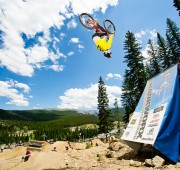Basic Photo Analysis
We have quite a few articles on editing, ranging all the way from really basic like the “Lightroom Introduction” article, all the way to articles like “Extreme Detail”. And they are all great, but your feedback had made us realizes how difficult the very beginning is. This article is part of series covering the basics of editing in practice, NOT in theory. Before you are ready to start applying basic adjustments to your photos, you need to understand how to perform a basic photo analysis.
The first thing you need to do after selecting your images is to take a minute and analyze them to see what needs to be adjusted, and what doesn't. It is very common that when people learn how to use Lightroom and Photoshop they apply a ton of color, over sharpen and over edit the images. We are going to try to help you avoid this stage, and make your images the best they can be.
- White Balance. This is the one you have to start with. Unless you are going for a certain moody look, your white balance needs to be spot on. It will also give you a good base for the rest of your adjustments and to figure out what an image really needs. Both Photoshop and Lightroom have tools that can easily fix your White Balance. You need to know that you have full control over the white balance of your shot only if you are working on RAW files. If you are editing JPEG then you can only adjust it to a small degree.
- Exposure. This is one of the first things we need to check, it is really easy to over or under expose an image. The good news is that is just as easy to fix it (Assuming the error is not large). The histogram is one of the best tools, that will help you check your exposure. The best advice we can give you, is to make sure you have all the details in the shadows, and all the detail in the highlights. Although this is not always possible, make sure to get it as close as possible. Besides the exposure slider, lightroom provides two separate sliders that are really useful in helping you with your exposure.
- Point of Interest or Enhancing the Focal Point. As much as focal point is a composition matter, you can stille help the viewer’s eye by enhancing the image in a certain way. The focal point in a photo is the main point of interest in the shot. It is the spot where the viewer’s eye must land when they look at the photo. There are many ways to enhance it, and the easiest one is to just brighten the area of the focal point. The eye tends to go to the brightest, sharpest, most colorful, contrasty areas of the photo that are positioned in the right spot (Check the basics of composition article). To have a great image you must combine as many of these “enhancements” as possible.
- Contrast. All RAW files coming out of any camera have something in common, they lack contrast. That’s why when you shoot RAW, than 99% of the time you need to add contrast to make your images look better. Look at your photo and decide if adding contrast is necessary. The best way to figure it out would be by applying some contrast and then backing it off. This way you can decide for yourself if you need it or not. It could be hard to say if you haven’t seen the photo with and without contrast.
- Sharpening. Last but not least, before you even consider editing an image, make sure it is sharp enough. Zooming to 100% should give you a pretty good idea of how much detail you have. If the image is out of focus or blurred you will be better off choosing a different one. Keep in mind that if it is a little soft, you can help it out in post production. It's always a shame to lose an image to poor focus or blur…. but you have to make the cut!
Analyzing your images is as important as actually editing. Take a minute or two just before editing to take a look at the "big picture" and see what actually needs to be done. In the next article we are going to show you how to do a basic Lightroom edit in practice.










No comment posted yet.